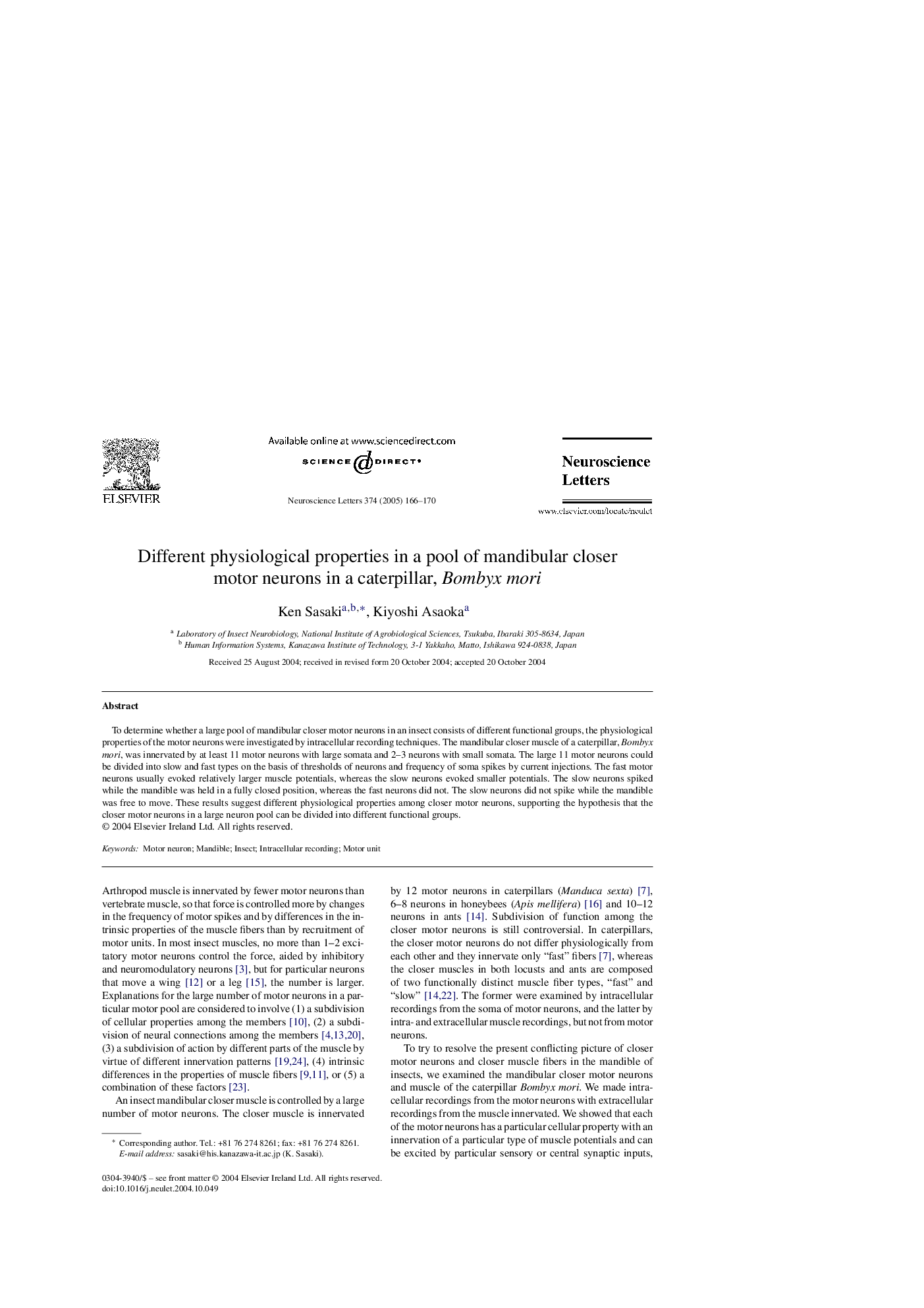| Article ID | Journal | Published Year | Pages | File Type |
|---|---|---|---|---|
| 9429706 | Neuroscience Letters | 2005 | 5 Pages |
Abstract
To determine whether a large pool of mandibular closer motor neurons in an insect consists of different functional groups, the physiological properties of the motor neurons were investigated by intracellular recording techniques. The mandibular closer muscle of a caterpillar, Bombyx mori, was innervated by at least 11 motor neurons with large somata and 2-3 neurons with small somata. The large 11 motor neurons could be divided into slow and fast types on the basis of thresholds of neurons and frequency of soma spikes by current injections. The fast motor neurons usually evoked relatively larger muscle potentials, whereas the slow neurons evoked smaller potentials. The slow neurons spiked while the mandible was held in a fully closed position, whereas the fast neurons did not. The slow neurons did not spike while the mandible was free to move. These results suggest different physiological properties among closer motor neurons, supporting the hypothesis that the closer motor neurons in a large neuron pool can be divided into different functional groups.
Related Topics
Life Sciences
Neuroscience
Neuroscience (General)
Authors
Ken Sasaki, Kiyoshi Asaoka,
